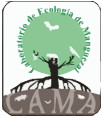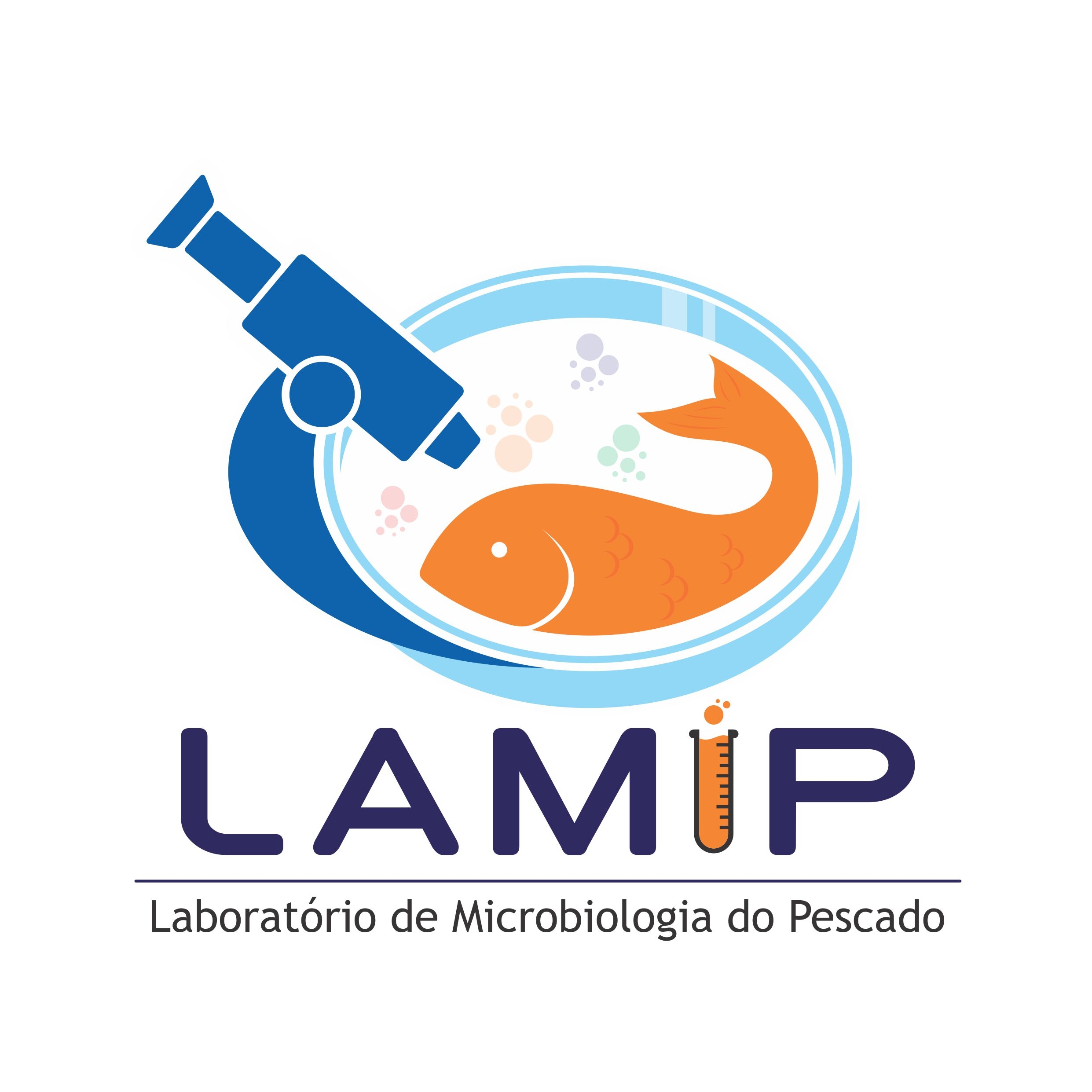The laboratories linked to the Environmental Biology Graduate Program are located in the University Campus of Bragança of the Universidade Federal do Pará. Currently, the Program has 18 individual research laboratories and three multi-user laboratories. In addition, it also counts on the laboratories of co-advisros and collaborators in the Campus of Bragança, Campus of Guamá, Belém, and in other HEIs of the country and abroad.
Didactic Collection of Zoology
Description and History: Located on the Campus of Bragança, it has 70 square meters. It is a didactic room with metal shelves and a collection of aquatic and terrestrial animals for use by students in different scientific-didactic activities.
Coordinator: Professor Marcus Fernandes
Laboratory of Image Analysis of the Humid Tropics (LAIT)
Description and History: Located on the Campus of Guamá, Belém. It has 80 square meters, equipped with 20 computers, tablets, plotters, among others.
Coordinator: Professor Pedro Walfir Souza-Filho
Aquaculture Laboratory with Circulation System
Description and History: Located on the Campus of Bragança, it has 80 square meters. The laboratory is equipped with aquariums, tanks, microscopes, blowers, stereoscopic loupes, power generators, precision scales, oximeters, pH meters, refractometers, distillers, deionizers, aerators, and other equipment for the purpose of maintaining aquatic organisms for reproduction studies, larval development, secondary production and growth rates.
Coordinator: Professor Zélia Maria Pimentel Nunes
Bioinformatics Laboratory
Description and History: Located on the Campus of Bragança, it has 40 square meters. The lab is equipped with 10 computers connected to the internet and projector for Post-Graduation classes.
Coordinator: PPBA Coordination
Laboratory of Plant Biology
Description and History: Located on the Campus of Bragança, it has 60 square meters. The laboratory is equipped with stereoscopic loupes, scales, microscopes, greenhouses, among others.
Coordinator: Professor Ulf Mehlig
Carcinology Laboratory
Description and History: Located on the Campus of Bragança, it has 60 square meters. The laboratory is structured for the study of the reproductive biology of crustaceans in general and specifically of the swamp ghost crab (Ucides cordatus). Equipped with fiber tanks, aquariums, algae room, microscopes, stereoscopic loupes, aeration system, computers, among others.
Coordinator: Professor Fernando Araújo Abrunhosa
Laboratory of Cartography, Geoprocessing and Modeling
Description and History: This laboratory has 70 square meters. It is equipped with 15 computers and three servers connected to the internet and projector for undergraduate and graduate classes. Its structure allows the study of the contamination of groundwater by infiltration of necro-leachate, leachate, leaks of hydrocarbon products from gas stations. Among other purposes are: the geophysical / geological modeling of sedimentary basins and the processing and interpretation of seismic data for the exploration of hydrocarbons. The aforementioned laboratory is equipped with multi-user equipment acquired by CT-Infra as described below: a) Seismograph: geophysical instrument for conducting surveys of refractive seismic (shallow seismic), well and interbody reflections, surface waves, tomography and monitoring seismic and environmental, (b) Ground penetration radar (GPR): a non-destructive geophysical instrument to locate subsurface shallow geological features and studies and to conduct studies of subsurface environmental contamination, (c) Echoprobes, (d) GPS, (e) Theodolites, (f) Levels, and others.
Coordinator: Professor Pedro Chira Oliva
Laboratory of Conservation and Evolutionary Biology
Description and History: Located on the Campus of Bragança, with 40 square meters, the laboratory is specialized in Molecular Phylogeny, Population Genetics and Conservation, especially of bivalves and primates.
Coordinator: Professor Claudia Helena Tagliaro
Mangrove Ecology Laboratory (LAMA)

Description and History: The first activities of the Mangrove Ecology Laboratory (LAMA – Portuguese acronym) occurred in the building where the former classroom of the Environmental Biology Graduate Program (PPBA) of the Campus of Bragança, in the year 2002. In the March 03, 2006, Ordinance number 013 formally designated Dr. Marcus Emanuel Barroncas Fernandes as coordinator of LAMA. From that date, with new perspectives, the laboratory began to expand its lines of research and its staff of students and scholars, consolidating the creation of the current Mangrove Ecology Laboratory. LAMA is part of the Faculty of Biological Sciences of the Institute of Coastal Studies (IECOS – Portuguese acronym), which is located in the University Campus of Bragança, northeast of the State of Pará. LAMA has maintained its activities through national and international sources, which have provided the production of books, chapters of books and scientific articles on the most varied topics related to the mangroves of the Brazilian Amazon. Therefore, any publication made available on this site is the result of this funding and from the date of creation, in fact, of this laboratory, the year of 2002.
Coordinator: Dr. Marcus Emanuel Barroncas Fernandes
Website:
Ancestral DNA Laboratory
Description and History: Located on Campus Guamá, Belém, the laboratory has 40 square meters.
Coordinator: Professor Horacio Schneider
Evolution Laboratory
Description and History: Located on the Campus of Bragança, with 50 square meters, the laboratory specializes in Animal Genetics, working mainly in the following topics: Phylogeny, Phylogeography and Population Analysis of Vertebrates.
Coordinator: Professor Marcelo Vallinoto
Laboratory of Genetics and Molecular Biology
Description and History: Located on the Campus of Bragança, with 150 square meters, the laboratory is equipped with two automatic DNA sequencers (ABI 377 and MegaBace).
Coordinator: Professor Iracilda Sampaio
Laboratory of Genetics and Conservation
Description and History: Located on the Campus of Bragança, with 50 square meters, the laboratory specializes in Applied Genetics to fish, aquatic mammals, Phylogeography and Molecular Systematics of birds, Molecular Genetics of primates of the new world.
Coordinators: Professors Juliana Araripe and Péricles Sena
Coastal Geology Laboratory (LAGECO)
Description and History: Located on the Campus of Bragança, with 40 square meters, the laboratory is equipped for the study of the Sedimentology, Dynamics and Geomorphology of the Coastal Environments. Contains equipment for Granulometric Analysis, including multi-user equipment acquired by CT-INFRA to perform laser grading: dredger, Acoustic Doppler current profiler (ADCP) and electromagnetic, digital tachographs, CTD probe, DGPS R4 system, echo sounder and GPS, among others.
Coordinator: Professor Nils Edvin Asp Neto
Laboratory of Fish Microbiology

Description and History: Located on the Campus of Bragança, with 50 square meters, the laboratory is specialized in the study of Microbiology and Population Genetics and Molecular Phylogeny of fish. It has two automatic sequencers.
Coordinator: Professor Simoni Santos da Silva
Mollusk Laboratory
Description and History: The Mollusk’s Laboratory is located at the Institute of Coastal Studies of the Federal University of Pará, Bragança, Pará, Brazil. The research focuses on patterns of abundance and diversity of benthic organisms, in particular mollusks, both freshwater and sea. Studies are also carried out on the reproduction and settlement of bivalves of rivers and estuaries. The laboratory collaborates with other laboratories in the areas of Genetics and Bivalve Reproduction.
Coordinator: Professor Colin Robert Beasley
Website:
https://labmoluscos.wordpress.com/
Coastal Oceanography Laboratory
Description and History: Located on the Campus of Bragança, with 80 square meters, the laboratory is dedicated to the study of coastal and estuarine dynamics (hydrodynamics, winds, currents), beach profiling and sediment transport. It is equipped with chapel, distiller, deionizer, freezers, vacuum pump, Acoustic Doppler current profiler, tide gauges, CTDs, rot up, water bath, oceanographic buoys, desktop computers, notebooks, portable multi-analyzers, oximeters, beach profiling equipment (level, tripod and ruler), GPS, camcorders, digital cameras, among others.
Coordinator: Professor Luci Cajueiro Pereira.
Laboratory of Plankton and Culture of Microalgae
Description and History: Located on the Campus of Bragança, with 50 square meters, the laboratories are equipped for the study of planktonic organisms. It contains stereoscopic magnifiers, microscopes, spectrophotometer, centrifuge, water quality multi-analyzer, plankton networks, GPS, among others.
Coordinator: Professor Rauquírio André Albuquerque Marinho da Costa
Water Quality Laboratory
Description and History: Located on the Campus of Bragança, with 50 square meters, the laboratory is equipped with instruments for the measurement of physical and chemical variables of water, such as digital multi-parameter meter.
Coordinator: Professor Zélia Maria Pimentel Nunes
Laboratory of Fish Chemistry (LAQUIPE)

Description and History: The Fish Chemistry Laboratory started its activities in early 2009 and is currently equipped with instruments to perform various chemical analyzes, such as gas chromatograph, NIR spectrophotometer, UV-Visible spectrophotometer, Lyophilizer, water bath, rotary evaporator, centrifugal. The research line to which the LAQUIPE is connected to Assessment and Uses of Bio-Aquatic Resources.
Coordinator: Professor Evaldo Silva
Website:
http://laquipeufpa.wix.com/laquipe1
Laboratory of Systematics and Coevolution (LASCO)

Description and History: LASCO is a laboratory focused on the studies of Taxonomy, Systematics and Historical Reconstruction of parasites, mainly, the parasite paltellinae of the class Monogenoidea.
Coordinator: Professor Marcus Vinicius
Website:
Multiuser Laboratory of Microscopy (E-Multimage)
Description and History: Located on the Campus of Bragança, with 40 square meters, the laboratory is financed by CT-Infra, FINEP and equipped with three microscopes, three magnifiers and systems for photography.
Coordinator: Professor Marcus Vinícius Domingues
Website: